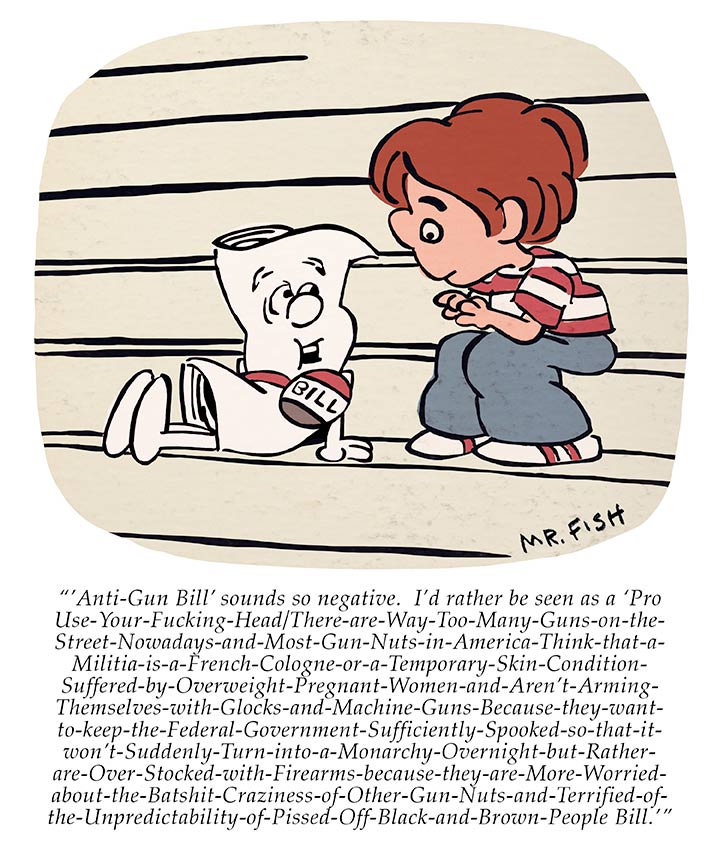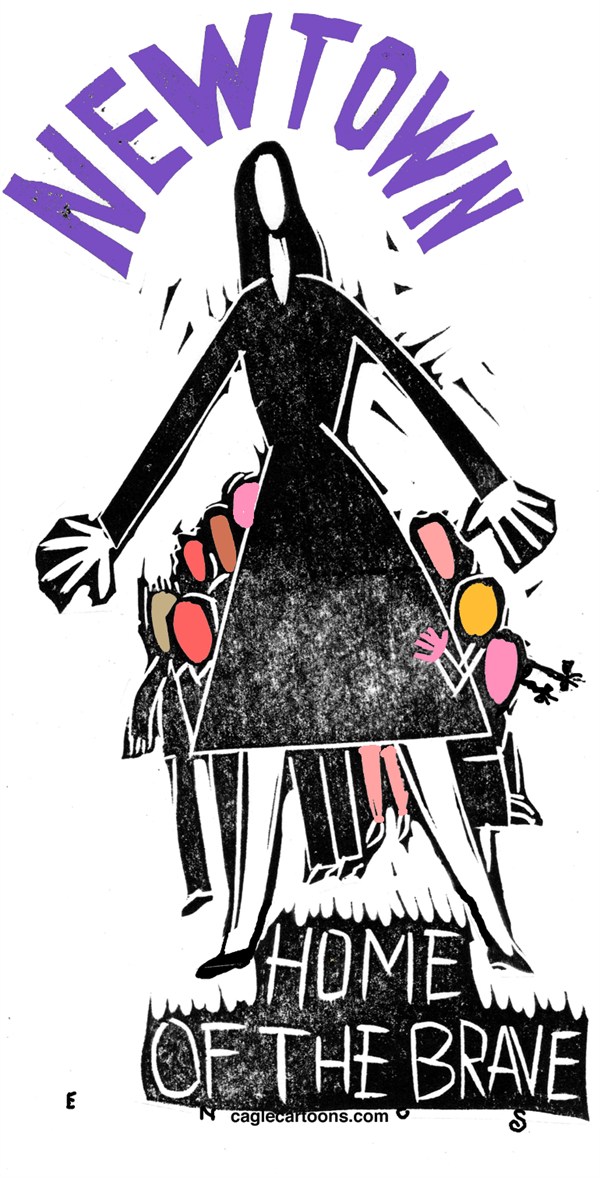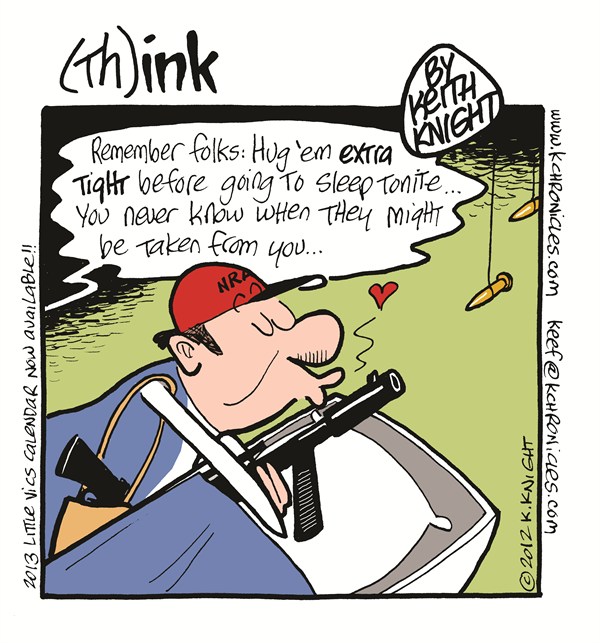n2doc
n2doc's JournalYour Hamburger May Have Feces Inside of It
Margaret Lamkin is now 90 years old. She does not visit her grandchildren much these days, she never flies, and she constantly worries about infection. That is because three years ago, Lamkin was ravaged with a pathogen that destroyed her colon and nearly killed her. She has to wear a colostomy bag for the rest of her life - all because of a medium-rare steak she ate at the casual dining restaurant Applebee's.
For many people, the epitome of a good meal is a nice steak. However, according to a new report, you may want to be careful about eating steak medium-rare - or even heating it up further. The report states that many large beef providers conduct a process called mechanical tenderization, which prods the meat with blades in order to cut through the tissue and muscle fibers and make the meat less tough. The process may be pushing E. coli and fecal matter to the middle of the meat and could be responsible for sickening at least 100 people between 2000 and 2009.
The bacteria E. coli lives primarily on the surface of the meat, which is why it is generally safe to eat rare meat where the inside is practically uncooked. However, mechanically tenderizing the meat pushes the bacteria inside the surface. What's worse is that the meat is unlabeled, so consumers, grocery stores, restaurants, and distributors do not know what they are getting. Even well-cooked, one report says that bacteria can hang out in cold spots even when ground meat is cooked to 160 degrees Fahrenheit and intact cuts are cooked to 145 degrees Fahrenheit. Though, according to a 2008 USDA survey, 90 percent of beef producers used the process on at least some of their cuts, they are not required to label their meat as such. In fact, the beef industry says that there is no problem. They say that E. coli infection has gone down among all beef sources between 2000 and 2011.
Read more at http://www.medicaldaily.com/articles/13492/20121213/your-hamburger-feces-inside.htm
Nine News Organizations Sent a Letter to Romney Campaign Challenging Expenses
Six weeks after the election, nine news outlets are questioning the financial propriety of the Romney campaign after receiving several exorbitant bills. The news organizations, which include the New York Times, the Washington Post, BuzzFeed and the Los Angeles Times, wrote a letter to the campaign, asking for detailed price breakdowns of any event that cost them $200 or more. While it's normal for campaigns to bill media outlets for various expenses, including food and travel costs, the Romney campaign's charges seem excessive by almost any standard.
As BuzzFeed reported last week, each reporter was charged $812 on October 11 for a single meal and a spot in a rented "holding place," a spot for the press to wait before the next event. The letter cites similar charges of "$461 for a meal and hold the next day; $345 for food and hold Oct. 30." The Romney campaign also billed news outlets $745 per reporter for a "viewing party," which included massage tables and fresh cut flowers, during the first vice-presidential debate.
While it's easy to assume the bills were artificially inflated, sources told BuzzFeed the high prices were due to the overall horrible management of the campaign, which was so poorly run, apparently, that staffers had to resort to stealing the press's overpriced food. As the letter states: "... it was clear to all present that the campaign's paid staff frequently consumed the food and drinks ostensibly produced for the media."
http://gawker.com/5969308/news-organizations-send-letter-to-romney-campaign-challenging-exorbitant-expenses
Hubble’s Heavenly Holiday “Ornament”
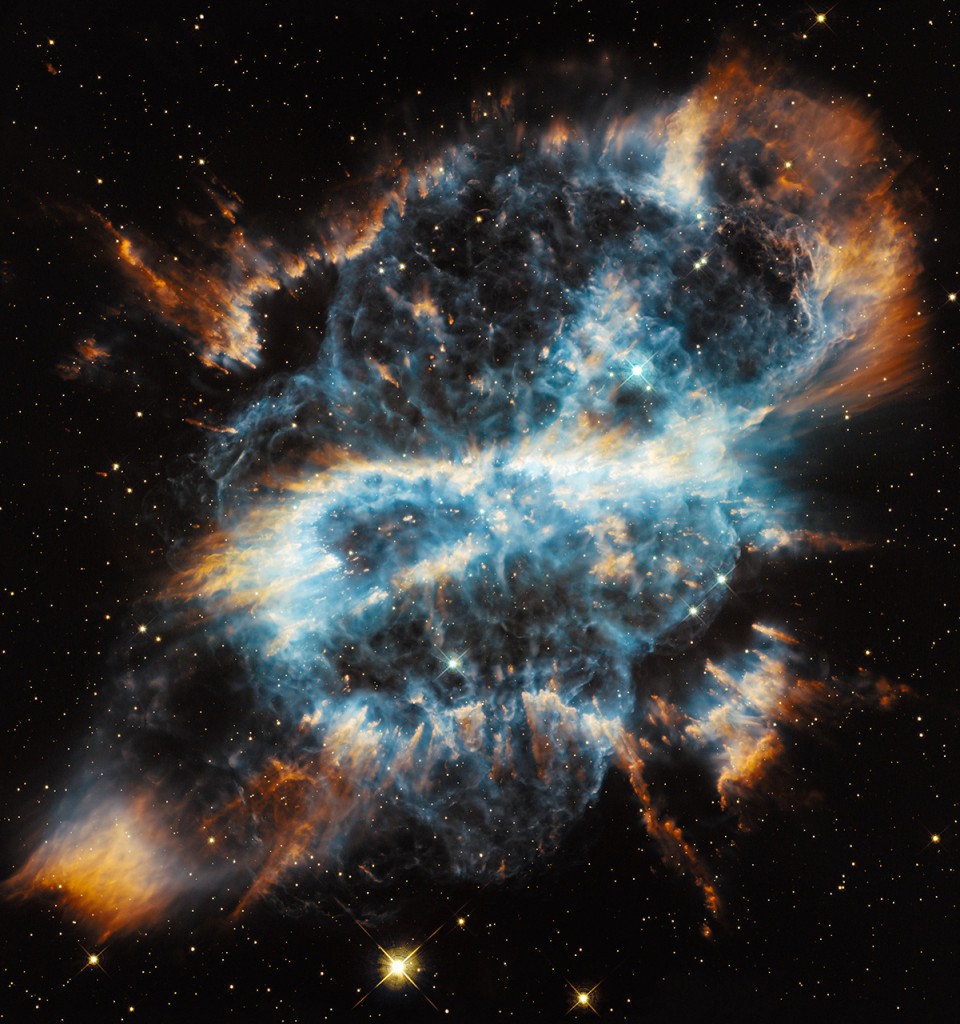
Planetary nebula NGC 5189 as seen by Hubble’s Wide Field Camera 3. Credit: NASA, ESA, and the Hubble Heritage Team (STScI/AURA)
It may be just a tad too big to hang on your tree but this bright, twisted planetary nebula would make a beautiful holiday ornament… if scaled a bit down to size, of course.
NGC 5189 is a planetary nebula that lies 1,800 light-years away in the southern constellation Musca. The gorgeous image above, acquired by Hubble’s Wide Field Camera 3 on October 8, 2012, shows the glowing streamers of oxygen, sulfur and hydrogen that are being blown far into space from the hot star star at its heart — HD 117622 (at right.)
The expelled gas forms a double structure, with a series of central blue lobes surrounded by a twisted helix of bright streamers, called radial filaments. These filaments are the result of fast-moving material from the star impacting previously expelled, slower-moving gas, which becomes visible due to ionizing radiation.
Read more: http://www.universetoday.com/99053/behold-hubbles-heavenly-holiday-ornament/
One of the Largest Astronomical Images Ever Made
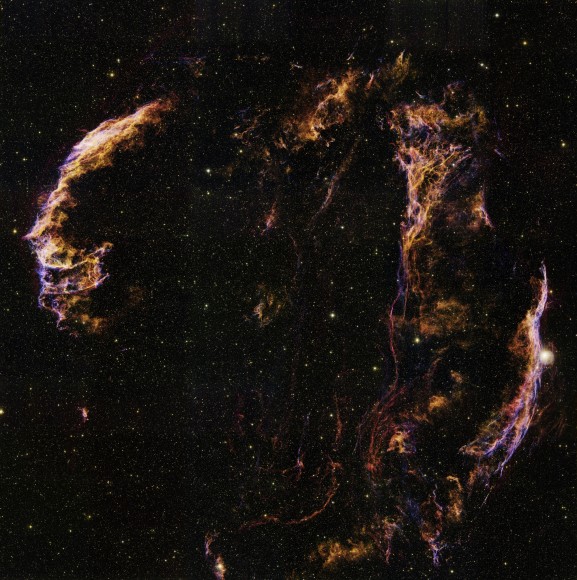
The northern portion of the Cygnus Loop, as seen in an enormous new panorama from the National Optical Astronomy Observatory (NOAO) and WIYN partners
Looking for a stunning new desktop image to wrap up the year? Try this: it’s an amazing panorama of the Cygnus Loop, a supernova remnant located 1,500 light-years away in the constellation (you guessed it) Cygnus. The full-size image, acquired with the wide-field Mosaic camera on the WIYN 0.9-meter telescope at Kitt Peak, Arizona, is a staggering 600 million pixels in size — over 1.68 gigabytes — making it one of the largest astronomical images ever made!
The entire structure of the Cygnus Loop, the gaseous remains of a supernova that occurred 5,000 – 10,000 years ago, spans an area nearly 45 times the width of the full Moon in the sky.
In the image, hydrogen alpha, sulphur, and oxygen ions correspond to the red, green, and blue color values, respectively.
“Images like this are amazing because they can remind you of the big picture and beauty that surrounds us.”
– Dr. Richard Cool, MMT Observatory
Read more: http://www.universetoday.com/99069/one-of-the-largest-astronomical-images-ever-made/
Gorgeous New Backlit View of Saturn

NASA’s Cassini spacecraft has delivered a glorious view of Saturn, taken while the spacecraft was in Saturn’s shadow. Image credit: NASA/JPL-Caltech/Space Science Institute
The Cassini team has done it again. A new 60-image mosaic of Saturn shows a back-lit view of the giant ringed world in several wavelengths, making Saturn look like a colorful holiday ornament. In October, the Cassini spacecraft was deliberately positioned within Saturn’s shadow, and the cameras were turned toward Saturn and with the Sun behind the planet.
“Of all the many glorious images we have received from Saturn, none are more strikingly unusual than those taken from Saturn’s shadow,” said Carolyn Porco, Cassini’s imaging team lead based at the Space Science Institute in Boulder, Colorado. “They unveil a rare splendor seldom seen anywhere else in our solar system.”
“Looking back towards the Sun is a geometry referred to by planetary scientists as “high solar phase;” near the center of the target’s shadow is the highest phase possible,” the Cassini team explained. Not only does this produce a stunning image, but it is very scientifically advantageous as well, as it can reveal details about both the rings and atmosphere that cannot be seen in lower solar phase.
Read more: http://www.universetoday.com/99073/gorgeous-new-backlit-view-of-saturn/
Profile Information
Gender: Do not displayMember since: Tue Feb 10, 2004, 01:08 PM
Number of posts: 47,953




